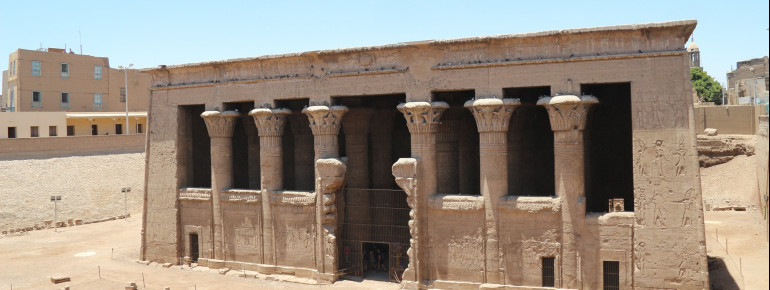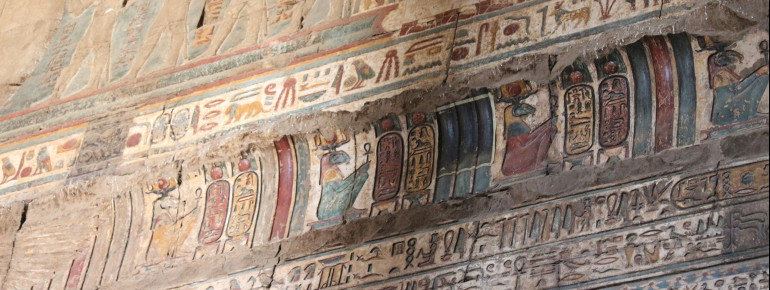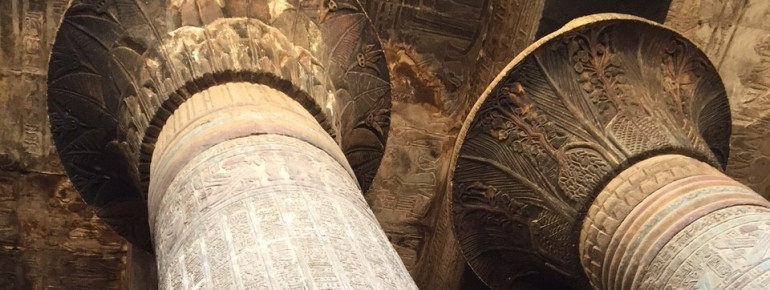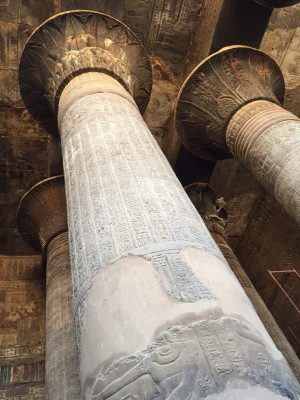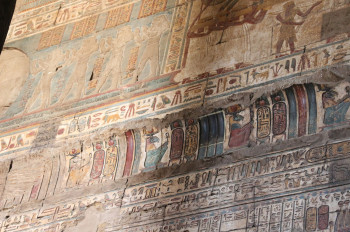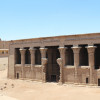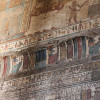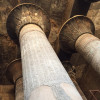Contents
Description
The Temple of Khnum is located in Upper Egyptian Esna, about 55 kilometers south of Luxor and 135 kilometers north of Aswan. As the name suggests, it was dedicated to the deity Khnum, who was considered in ancient Egyptian mythology to be the creator of humans and gods.
Originally, the complex included, in addition to the so-called pronaos—which can still be visited today—a columned hall, a sanctuary dedicated to the god Khnum, and an enclosure wall adorned with reliefs.
Today, the ancient Egyptian site is particularly known for its well-preserved inscriptions and reliefs in the interior. The ceiling is decorated with astronomical frescoes depicting ancient Egyptian zodiac signs and mythological representations of the sun’s journey through day and night.
Historical Information
The temple was constructed under the reigns of the pharaohs Ptolemy VI and Ptolemy VIII during the 2nd century BC. In Roman times, around 249 to 251 AD, the complex was expanded. Over time, the temple sank beneath layers of silt due to the annual Nile floods. As a result, today's street level is about nine meters higher than it was when the temple was built, and the colored reliefs inside the temple have been exceptionally well preserved by the protective layers of mud.
During Napoleon’s Egyptian campaign, the columned hall of the pronaos—the part of the temple still standing today—was excavated by French soldiers. The first scholarly investigations were carried out by the French Egyptologist Auguste Mariette in the mid-19th century.
Today, the Temple of Khnum is one of the most important sights in the city of Esna. Located only about 200 meters from the Nile’s banks, it is a regular stop on Nile cruise itineraries between Luxor and Aswan.
How to get there
The Temple of Khnum is located only about 200 meters from the Nile cruise dock, making it easily accessible on foot for tourists. To reach it, visitors simply follow the road through the Esna bazaar until they arrive at the temple.

